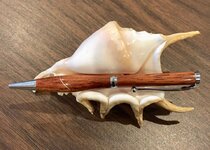Warren White
Member
Because of a reaction with my 2P-10 CA, I am considering odorless CA; specifically the Bob Smith Industries Super Gold and Super Gold +.
Before I drop the money on it, I am wondering if there is anyone that can answer the following questions about it:
1. Do it finish like 'regular' CA?
2. Does the finish seems as (for lack of a better word) sturdy as 'regular' CA?
3. Can you use any accelerator on it? I use NCF Quick.
4. Is the viscosity of Super Gold like 2P-10 thin, and the viscosity of Super Gold+ like 2P-10 Medium?
I asked the folks at Bob Smith Industries, but they were kind of vague.
Thanks a lot!
Before I drop the money on it, I am wondering if there is anyone that can answer the following questions about it:
1. Do it finish like 'regular' CA?
2. Does the finish seems as (for lack of a better word) sturdy as 'regular' CA?
3. Can you use any accelerator on it? I use NCF Quick.
4. Is the viscosity of Super Gold like 2P-10 thin, and the viscosity of Super Gold+ like 2P-10 Medium?
I asked the folks at Bob Smith Industries, but they were kind of vague.
Thanks a lot!

